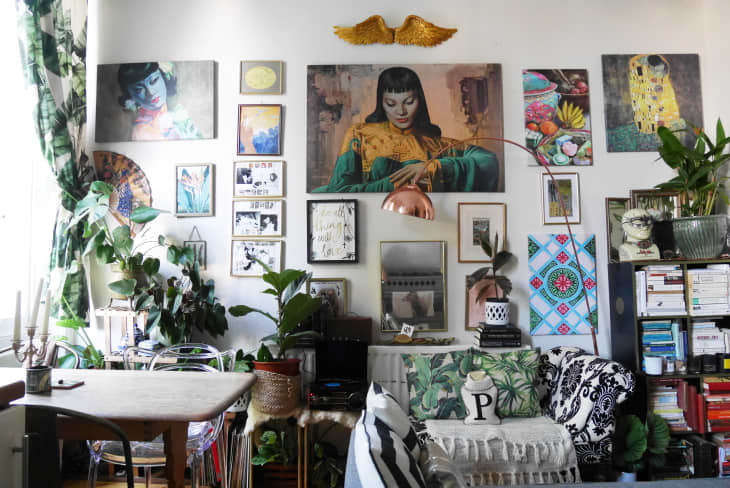When you read articles about caring for houseplants, they typically tell you what you should be doing to get your green pups to thrive. But sometimes it’s more effective to hear the opposite—after all, you can’t learn from your mistakes until you know what they are. Here are five bad houseplant habits that all plant parents need to break right now.

1. Just buying whatever looks pretty
When I got my first couple of houseplants, back in my college dorm, I randomly chose a peace lily and a sage plant. I love the smell of sage and I thought it would be a natural air freshener for the room. What I didn’t know is that sage, compared with other herbs, is tricky to grow indoors, and it needs a ton of sunlight to even stand a chance—something my dorm room definitely did not have. Needless to say, it died within a couple of months. The peace lily, on the other hand, is still going strong seven years later because it could handle the dim conditions.
So the moral of the story is: Don’t set yourself up for failure by choosing a plant that won’t grow in your home’s conditions or requires more attention than you’re willing to give it. Find out how much light and care it needs and go from there.
2. Always assuming water is the answer
When my poor sage was on its last legs, I assumed—like many houseplant novices before me—that I wasn’t watering it enough. So I began watering almost daily, which, in retrospect, probably hastened its demise. (Sage likes its soil on the drier side.) If your houseplant looks under the weather, chances are good that more water won’t solve the problem, and in many cases it will only make things worse.
Instead, your best course of action is to find a reputable growing guide and consult the recommendations. Good growing guides make troubleshooting easier and tell you what problems your plant is susceptible to.
3. Misting instead of watering
While we’re on the subject of watering, please know that misting your plants is not the same as watering them. Too often I see people assuming that a quick spritz from a cute little spray bottle will do the trick. Imagine if you asked someone for a glass of water and, instead of letting you drink it, they splashed it on your face. That’s what you’re doing to your plants.
Now, I’m not saying you should never mist your houseplants. Misting creates humidity, and some tropical plants appreciate it (though there are more effective methods for increasing humidity around your plants), but it should supplement watering. To water properly, pour water directly on the soil until it runs out the drainage holes at the bottom of the pot.

4. Watering all your plants on the same schedule
Okay, I promise this is the last one about watering, but this is important! Your succulent does not need to be watered as often as your monstera. And your pothos doesn’t need the same about of water as your kitchen herbs. It’s easy to remember to water if you do it on the same day every week, but it’s not always ideal for your plants. Sure, some of them will end up thriving, but others will suffer unless they all have similar requirements. Plants’ water needs often change depending on the season, too, something a rigid watering schedule doesn’t take into account.
A better test is to stick your finger in the soil. If it’s dry an inch or so down, water it. If not, come back in a few days. You don’t need to check every single day, but get in the habit of doing it multiple times per week. This will help you get to know your plants individually and you’ll get better at predicting when they need water as time goes on.
Hải Yến
Gió bạn với cây tự buổi nào ,
Gió về cây lại ngất ngư chao .
Gió đi cây sẽ im lìm đứng,
Như kẻ lỡ làng dạ khát khao .



